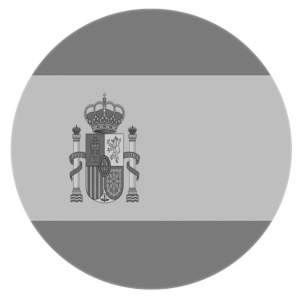The art of magic

Up to now there were little or no references of Ángeles Marcos- González’ work. She is a journalist that one day decided to give up her job and to dive into the Fine Arts’ teachings. A wise decision, if we look at her exhibition in Seville (May 1995), the first stop of a dawning career, which started on the inspiration of, and based on, the art of Cúchares.
Over fifty pieces, sculpture and paintings, make up the expositive coming out of somebody who feels art as the only way of life. Being aware of the difficulty of appearing publicly, Marcos-González sets forth in her paintings a unique and very personal re-creation of the art of magic, as José Bergamín defined bullfighting, whose symbols and presences, absences and suggestions, fill her paintings and sculptures.
But as she very well explains, Tauromías (which is the name she gave to this assortment of pieces) is just a plastic vision of bullfighting as she sees it, a peculiar way of understanding colour, tension, the essence which rises in a magic moment, wrapped in the colours of the sand of the bullring, red, blood and black. A life and death ritual, of space and time, held up in Marcos-González’ paintings all along over a decade of work searching for an arts language of her own.
Showing a meticulous, organized, structure, Marcos-Conzález’ paintings are a clear constructive lattice of shapes and suggestions full of colour.
Formal rigorousness is the feature which keeps together her work. Rigour and grace, both in the colour treatment and in the shapes layout: sensed figures, with blurred outlines, of a reality which only exists inside a plastic scenario of great surfaces with primary colours and Picassian expressions, risen under the air and nitre which you breath in the Mediterranean, already etched in her pieces as oxidation.
As Malraux used to say about Goya, Marcos-González knows, as no other coeval artist does, also how to establish an open dialogue with the public, thanks to a work without aesthetic and discursive claims, which travels with its own personality through a universe full of references without any sort of complexes.
When we say that in Marcos-Gpnzález’ work we find the influence of Paul Klee –because of the plainness of her forms –, of Miró – because of the strong Mediterranean character – of Picasso - because of the synthesis she makes of the bull, very much in line with the Vollard suite by the Malaga painter –, of Arp –, because of the monochromatic fragments endowed with a strange mobility, we reveal the names which for sure are etched in the plastic spirit of Marcos-González. A simple look at her sculptures gives birth to the old bicycle seat hanging from the wall at Villa California, one of the last of Picasso’s homes, and where it appears as if Marcos-González had drawn all the inner space of Picasso’s piece.
Marcos-González has presented her paintings in Seville, perhaps because it is the cradle of bullfighters and source of art. Bullfighting is just the excuse to affirm, like Bergamín does, that every language conveys itself, and Marcos-González has drifted away from her work observing it from a distance, she has confronted her pieces developed to exhaustion all along her working life. Oxidation is her discovery; shape, the central element; colour, the space where the bull’s gaze moves since its refuge; the picador’s hat, the opening stage of the bullfight, the second stage, an idea, an aesthetic illusion which helps this artist to step into the difficult world of art. Welcome.
José Antonio Chacón. Art critic for Diario 16. “Tauromías” Exhibition in Sala Winterthur. Seville. May 1995.
José Antonio Chacón, Art critic for Diario 16.
“Tauromías” Exhibition in Sala Winterthur. Seville. Mayo 1995.
MORE REVIEWS
Ecological and "Mironian" technique


